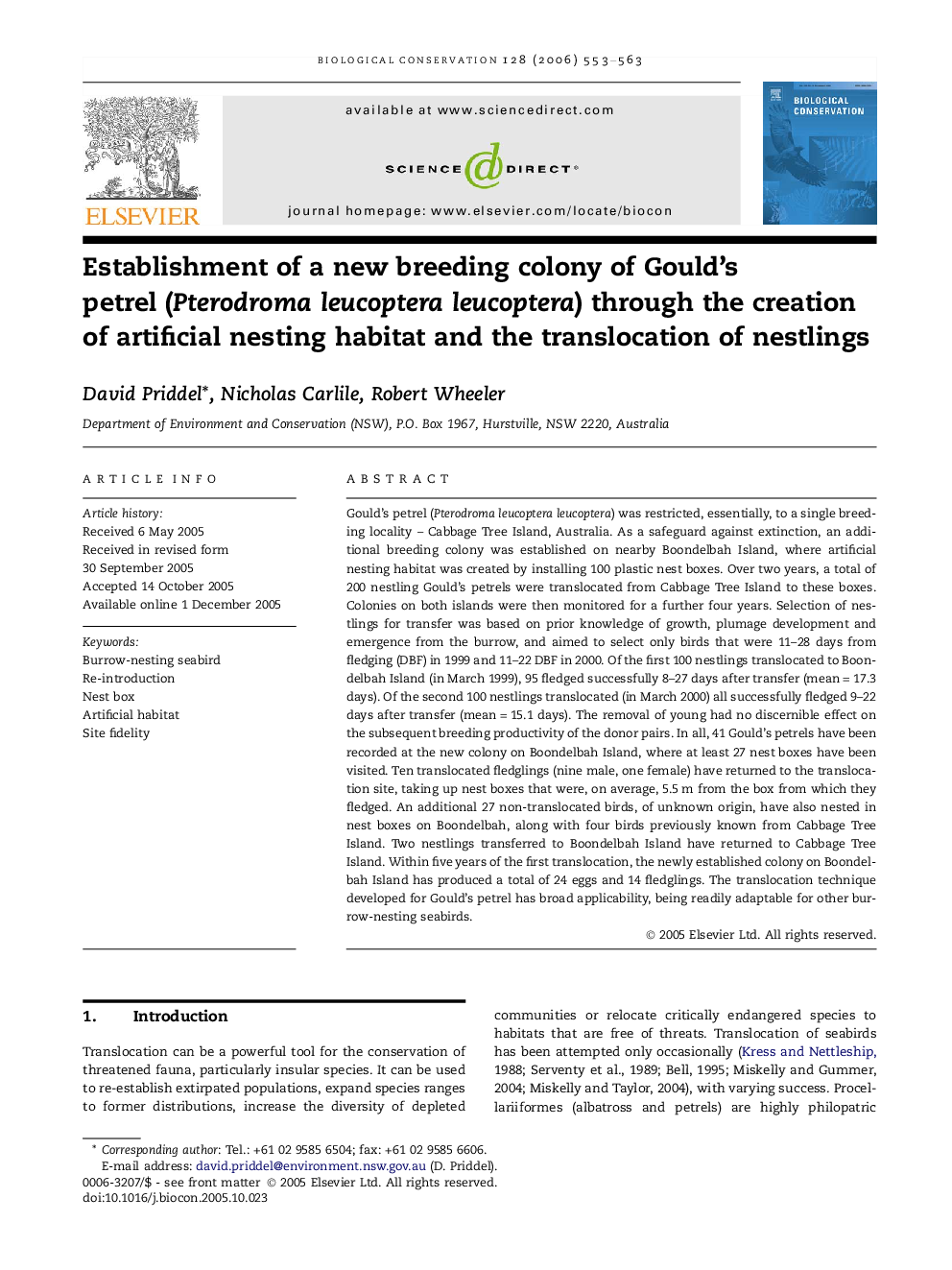| Article ID | Journal | Published Year | Pages | File Type |
|---|---|---|---|---|
| 4387818 | Biological Conservation | 2006 | 11 Pages |
Gould’s petrel (Pterodroma leucoptera leucoptera) was restricted, essentially, to a single breeding locality – Cabbage Tree Island, Australia. As a safeguard against extinction, an additional breeding colony was established on nearby Boondelbah Island, where artificial nesting habitat was created by installing 100 plastic nest boxes. Over two years, a total of 200 nestling Gould’s petrels were translocated from Cabbage Tree Island to these boxes. Colonies on both islands were then monitored for a further four years. Selection of nestlings for transfer was based on prior knowledge of growth, plumage development and emergence from the burrow, and aimed to select only birds that were 11–28 days from fledging (DBF) in 1999 and 11–22 DBF in 2000. Of the first 100 nestlings translocated to Boondelbah Island (in March 1999), 95 fledged successfully 8–27 days after transfer (mean = 17.3 days). Of the second 100 nestlings translocated (in March 2000) all successfully fledged 9–22 days after transfer (mean = 15.1 days). The removal of young had no discernible effect on the subsequent breeding productivity of the donor pairs. In all, 41 Gould’s petrels have been recorded at the new colony on Boondelbah Island, where at least 27 nest boxes have been visited. Ten translocated fledglings (nine male, one female) have returned to the translocation site, taking up nest boxes that were, on average, 5.5 m from the box from which they fledged. An additional 27 non-translocated birds, of unknown origin, have also nested in nest boxes on Boondelbah, along with four birds previously known from Cabbage Tree Island. Two nestlings transferred to Boondelbah Island have returned to Cabbage Tree Island. Within five years of the first translocation, the newly established colony on Boondelbah Island has produced a total of 24 eggs and 14 fledglings. The translocation technique developed for Gould’s petrel has broad applicability, being readily adaptable for other burrow-nesting seabirds.
